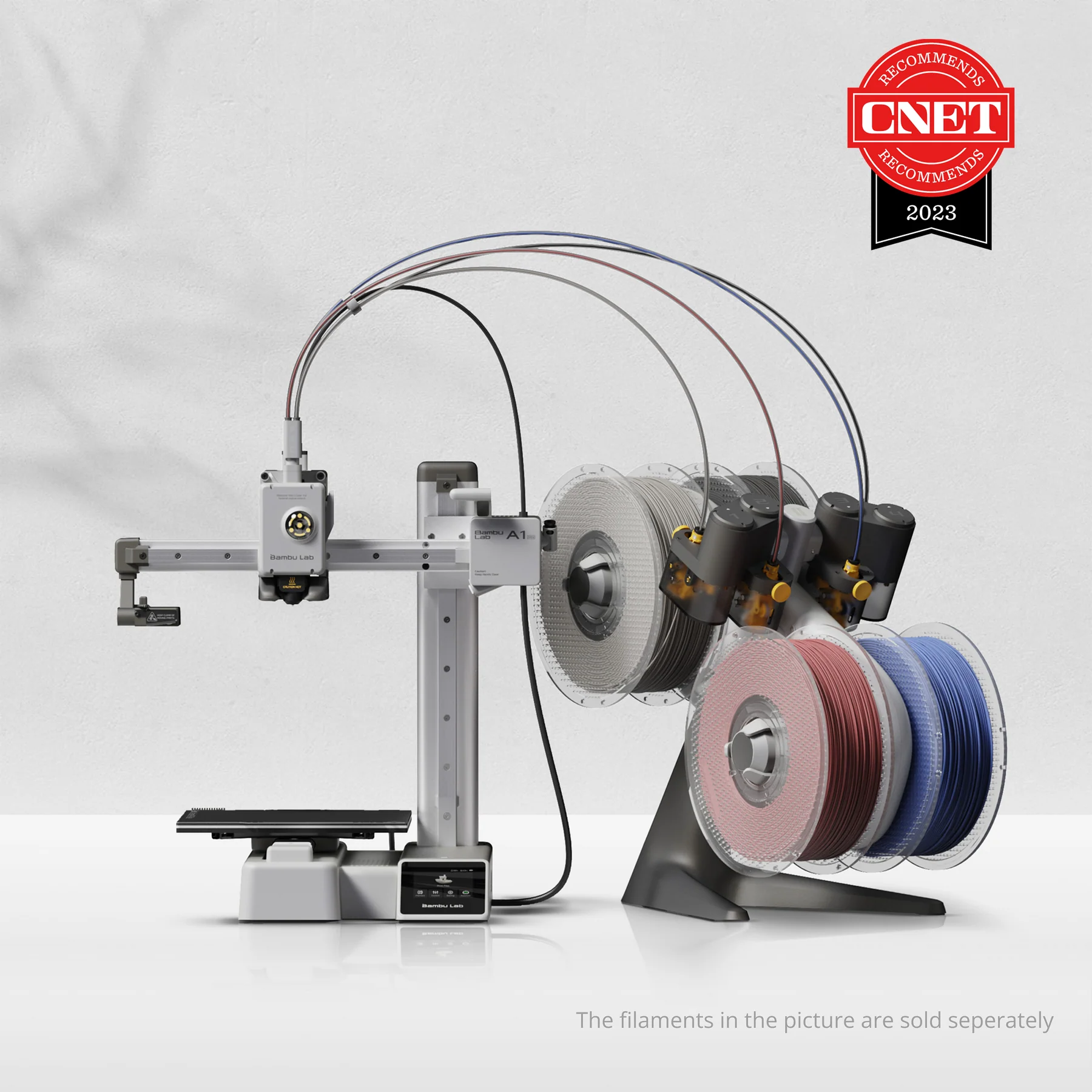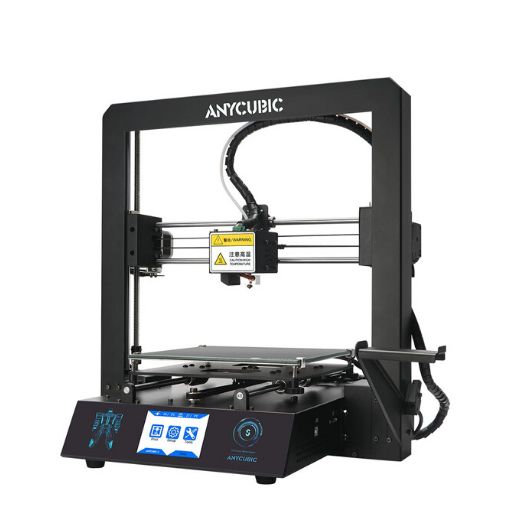Compare A1 Mini vs Mega S
Comparison between the best 3D printers
Choose the best 3D printer at the best price. The cheapest 3D printers are here.
Buy a 3D printer here with 3D Fila.
 |
 |
|
| Model | A1 Mini |
Mega S |
| Printing Material | Filament | Filament |
| Buy Filament for Bambu Lab A1 Mini | Buy Filament forAnycubic Mega S | |
| Estimated price | $549,00 | $149,00 |
| Manufacturer | Bambu Lab | Anycubic |
| Release Year | 2023 | 2019 |
| Print Volume [mm] | 180x180x180 | 210x210x205 |
| Printer Size [mm] | 315x347x365 | 405x410x452 |
| Weight [kg] | 5,5 | 14,5 |
| Power Loss Recovery | YES | YES |
| Enclosed printer | NO | NO |
| Bed Leveling | Automatic | Manual |
| Filament End Sensor | YES | YES |
| Bed type | Heated | Heated |
| Power supply system | Direct Drive | Bowden |
| Standard nozzle | 0,4 | 0,4 |
| Maximum Nozzle Temperature [°C] | 300 | 260 |
| Maximum Bed Temperature [°C] | 80 | 110 |
| Maximum printing speed [mm/s] | 500 | 100 |
| Filament holder | YES | YES |
| Camera for supervision | YES | YES |
| Recommended filaments | PLA, PETG, TPU, PVA | PLA, TPU, ABS, PETG |
| Recommended slicers | Bambu Studio, Super Slicer, Cura, Prusa Slicer, Orca | Cura, Simplify, Slic3r |
| Maximum Resolution [mm] | 0,1 | 0,1 |
| Processor | 32-bit Silenciosa | 8 bits |
| Display | Touchscreen 2,4'' | Touchscreen TFT 2,8'' |
| Power Supply | 150 W | 12V / 300W |
| Connectivity | Wifi, Bambu bus, Cartão SD | SD / USB |
| Operating systems | Windows, Linux, Macbook | Windows, Mac, Linux |
| Date of registration in the system | 2024-04-10 | 2021-04-15 |
| Release date | 2023 | 2019 |
| Extra features | The Bambu Lab A1 Mini stands out not only for its impressive speed and automatic calibration, but also for its multi-color printing capability thanks to AMS Lite. This innovative system makes multi-color printing easy, making it accessible to everyone. AMS Lite, specific to the A1 Mini, supports up to four different materials simultaneously, providing creative freedom without complications. With comprehensive sensors for energy monitoring and recovery, a camera for timelapses and Wi-Fi control, the A1 Mini and AMS Lite together offer an intuitive and advanced 3D printing experience, ideal for materials such as PLA, PETG and TPU, and designed for simplicity and fast maintenance with quick-change nozzles. | The Anycubic Mega S offers a printing platform with excellent adhesion, easy removal after cooling. It has a filament sensor for a better experience with flexible materials and a multilingual and intuitive color touchscreen. Assembly is quick, requiring only 8 screws and 3 connections. It has a large build volume (210 x 210 x 205 mm), high positioning accuracy and supports a variety of materials, including TPU, PLA, ABS and wood. It stands out for its solid metal structure, superior stability, high-quality printing with layer resolution of up to 50 microns, Ultrabase for easy adhesion and removal of parts, resumption of printing after power outage, high-quality extruder for flexible filaments, suspended filament support and stable structure that reduces shaking, improving printing quality. |
| Support for multiple colors and materials (AMS and CFS) | YES | NO |
Notes * |
||
| Cost-benefit | 7 / 10 | 7 / 10 |
| Hardware | 4.2 / 10 | 2 / 10 |
| Tela | . | . |
| Print volume | 3 / 10 | 3 / 10 |
| Performance | 4 / 10 | 1 / 10 |
Conclusion |
| In comparing the Bambu Lab A1 Mini and the Anycubic Mega S, it is clear that both printers cater to different user needs and preferences. The A1 Mini, with its superior maximum printing speed, automatic bed leveling, and multi-color printing capabilities, stands out for those seeking an innovative and efficient 3D printing experience. Its compact design and lightweight construction make it suitable for users with limited space or those prioritizing portability. Moreover, the intuitive features such as Wi-Fi connectivity, a touchscreen interface, and advanced monitoring systems enhance its usability. On the other hand, the Anycubic Mega S, though older, offers a larger print volume and solid build quality, making it a reliable choice for users who prioritize print size and stability. Its straightforward assembly process and compatibility with a wide range of materials also appeal to hobbyists looking for versatility. However, the Mega S lacks some of the advanced features and high-speed capabilities of the A1 Mini, which may be a limitation for those wanting to push the boundaries of their 3D printing projects. When considering cost-effectiveness, both printers receive similar ratings, suggesting they offer good value for their respective features. However, the A1 Mini's advanced capabilities may justify its higher price for users who require cutting-edge performance and ease of use. In contrast, the Mega S is a more budget-friendly option for those who need a dependable machine without the latest features. Ultimately, the best choice depends on individual needs: the A1 Mini is ideal for those focused on speed and innovation, while the Anycubic Mega S serves well for users prioritizing stability and a larger build area on a budget. |

